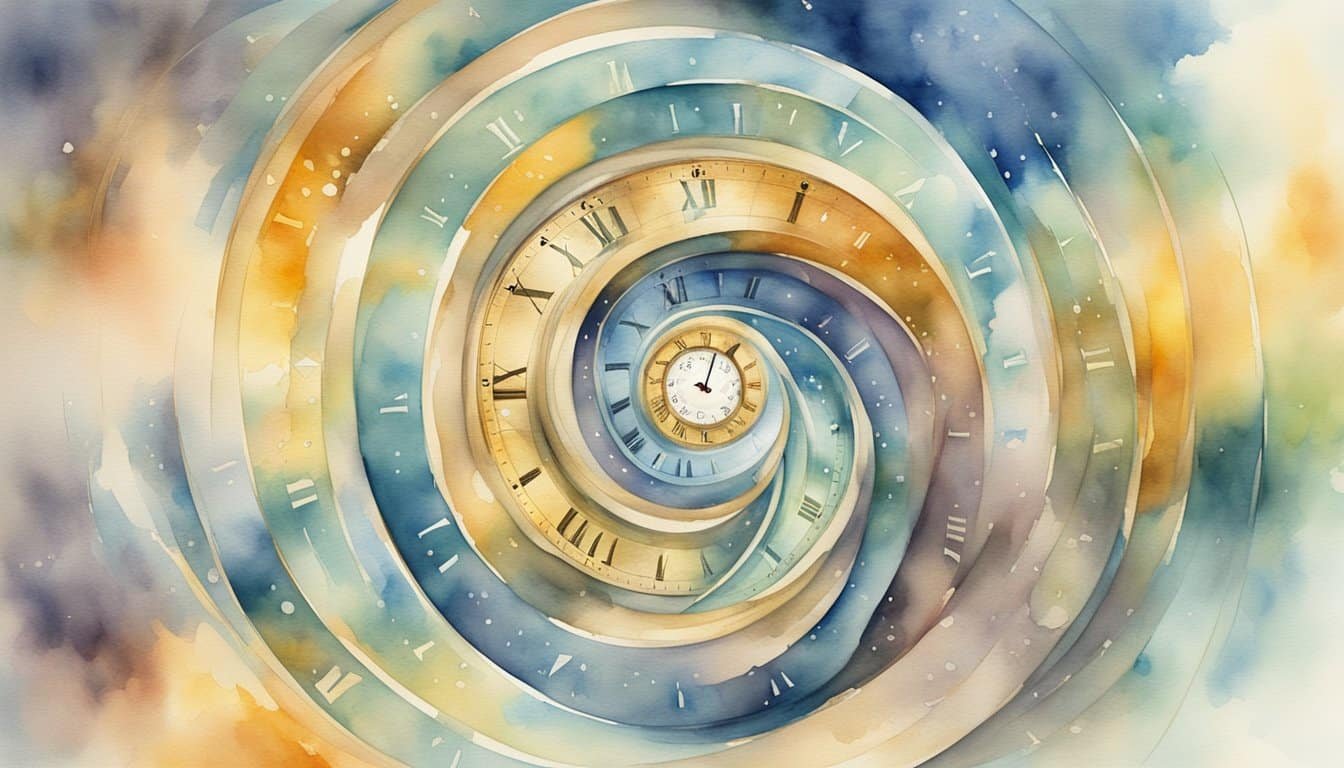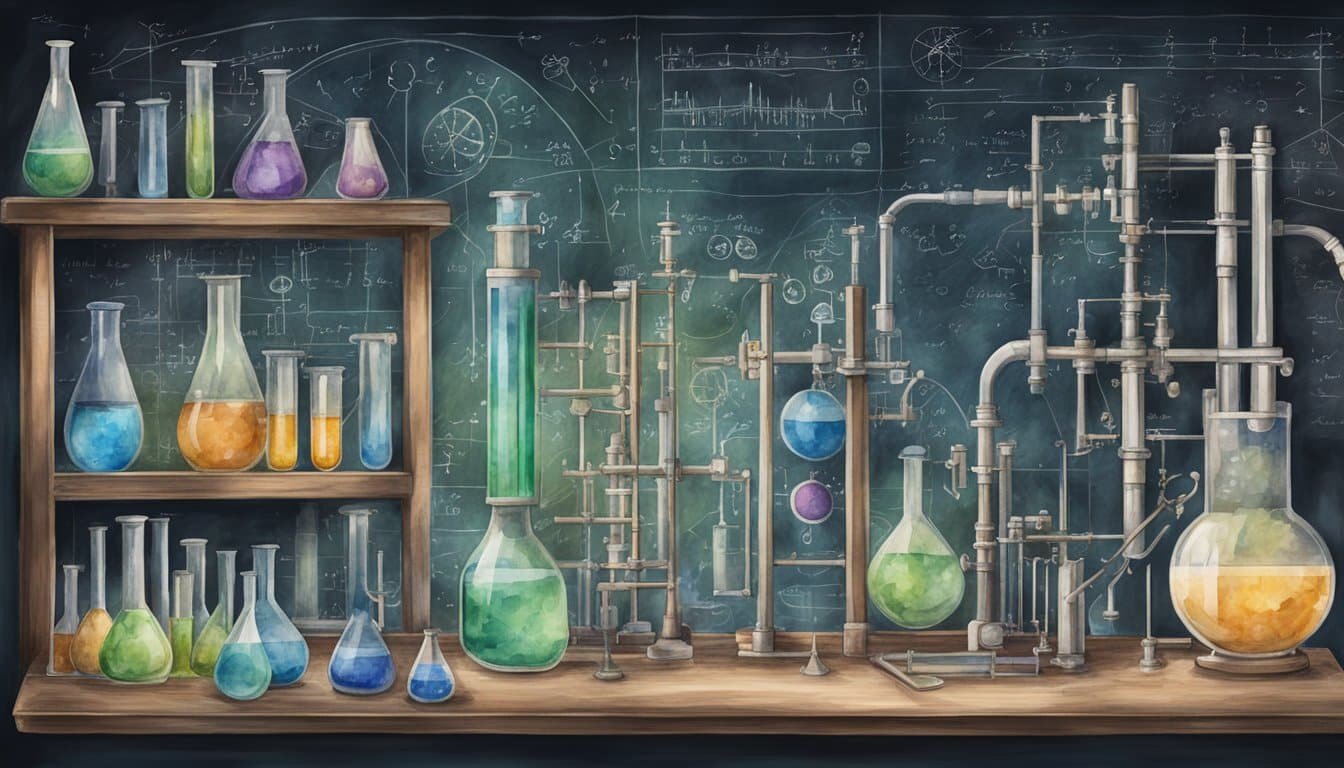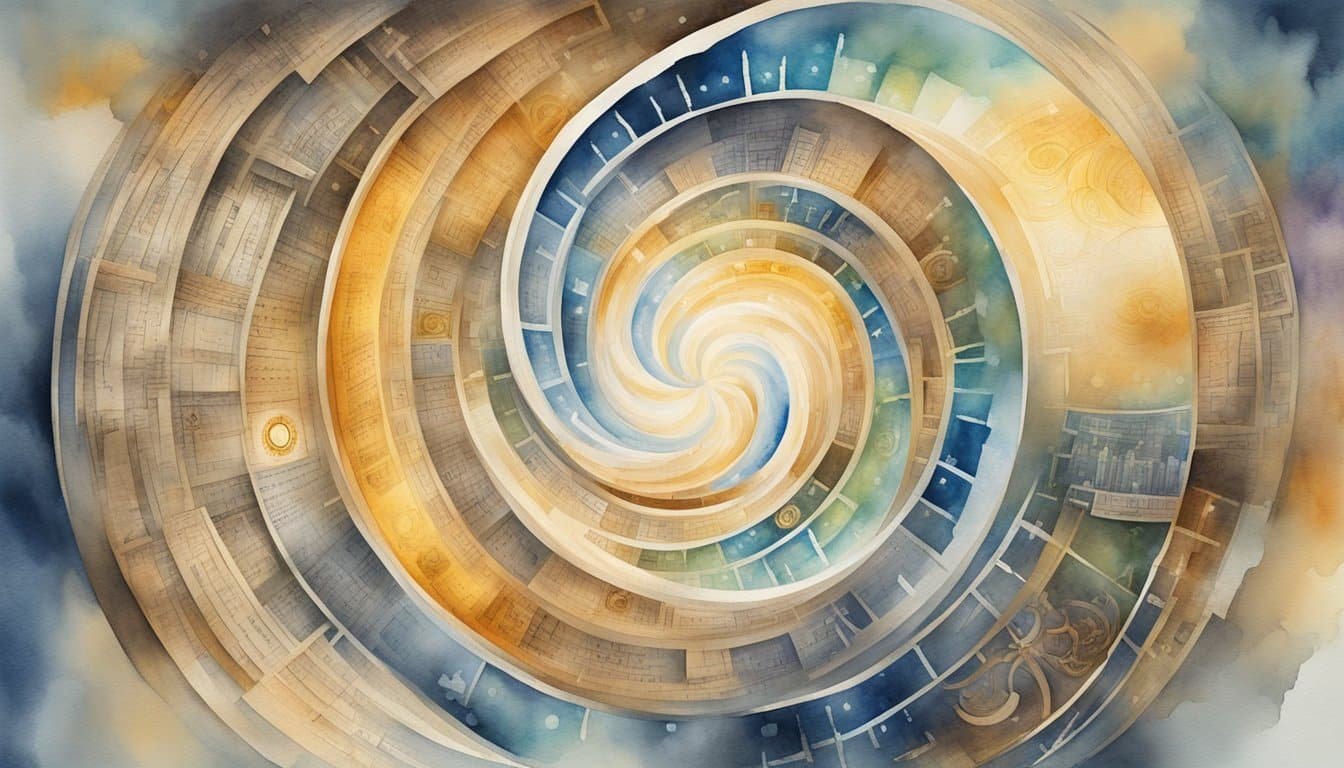The Foundations of Time Travel
Exploring the concept of time travel, one must engage with the fundamental theories of Einstein’s relativity and the intriguing structure of space-time. These concepts push the boundaries of physics, intertwining gravity, light, and the very fabric of the universe.
Einstein and Relativity
Albert Einstein revolutionized the way we understand the universe. His theory of relativity, which consists of general relativity and special relativity, suggests that the laws of physics are the same for all non-accelerating observers. He proposed that both time and space are intertwined in a single continuum known as space-time. Consequently, the speed of light in a vacuum is the ultimate speed limit of the universe and affects how time flows. In theory, approaching the speed of light could result in time dilation, where time for a speeding observer ticks slower compared to someone at rest.
Space-Time and Physics
Space-time is a four-dimensional fabric described in general relativity. Massive objects, such as planets and stars, create a gravitational field that curves this fabric. This curvature is what we perceive as gravity. Intriguingly, if time travel is within the realm of possibility, it hinges on this very concept. Theoretical physics has proposed scenarios like the existence of wormholes—bridges through space-time—which could allow for shortcuts across different points in time and space. However, these remain speculative as physical models pose significant challenges to the creation and maintenance of such phenomena.
Time Travel in Theory and Fiction

Time travel captivates the imagination, blending the boundaries of science and storytelling. The concept has evolved from H. G. Wells‘ groundbreaking work to modern science fiction hits like Doctor Who and Star Trek.
The Concept of Wormholes
Wormholes, or Einstein-Rosen bridges, are theorized cosmic shortcuts that could create pathways through spacetime. Stemming from Einstein’s theory of general relativity, a wormhole could potentially connect separate points in spacetime, making faster-than-light travel feasible. However, the stability of wormholes requires exotic matter—a substance yet to be discovered. This speculative structure became the backbone of travel in stories like Star Trek.
Time Travel Paradoxes
Time travel theories often stumble upon logical hurdles known as paradoxes. The most famous is the grandfather paradox, which posits that traveling back in time and preventing one’s grandfather’s birth would result in a contradiction: one could not exist to travel back in time in the first place. Another intriguing conundrum is the closed time-like curve, which allows for the possibility of traveling to the past without creating paradoxes, yet still remains a contentious topic among physicists.
Cultural Impact of Time Travel
Time travel stories have significantly influenced culture, offering creative explorations of our universe’s possibilities. Back to the Future masterfully combined humor with the perplexities of time travel, while Doctor Who painted it as an adventurous realm. The fascination lies not just in the mechanism of a time machine, but in the reflection of society’s hopes, fears, and ethical dilemmas that resonate across generations. These narratives often act as a mirror, reflecting humanity’s enduring quest to understand its place within the cosmos.
Practical Applications and Effects

When one thinks of time travel, science fiction often comes to mind. However, aspects of time travel already play a critical role in modern technology and space exploration. This section discusses how relativity impacts the GPS system, and what astronauts experience in terms of time dilation.
GPS System and Relativity
The Global Positioning System (GPS), a network of about 30 satellites orbiting Earth, is an everyday example of relativity in action. The internal clocks of these satellites run at a frequency that takes into account both the effects of time dilation due to their speeds and the difference in the strength of Earth’s gravity compared to being on the surface. To ensure accuracy, the system synchronizes the satellite clocks with those on the ground. If these adjustments weren’t made, a GPS’s location data could be off by up to 10 kilometers per day.
Time Dilation and Astronauts
Astronauts aboard the International Space Station (ISS) experience time slightly differently due to time dilation. The ISS travels at approximately 28,000 kilometers per hour, orbiting Earth about 16 times per day. Because of their high velocity and the effects of time dilation predicted by Einstein’s theory of relativity, astronauts on the ISS age marginally slower. For six months aboard the ISS, the difference in aging is just a fraction of a second, but it provides a fascinating example of relativity at work.
Scientific Queries and Experiments

In the quest to unravel the mysteries of time travel, scientists have embarked on various experiments and proposed numerous theories. Probing the limits of our understanding, these scientific endeavors often hinge on the laws of physics as we know them.
Searching for Time Travel Evidence
Theories and experiments have often looked to the cosmos for hints of time travel’s possibility. Renowned physicist Stephen Hawking once proposed the Chronology Protection Conjecture, suggesting that the laws of physics conspire to prevent time paradoxes and thus time travel. Despite this, telescopes and other observational tools have been leveraged to search for closed timelike curves—loops in spacetime that could theoretically allow for time travel—if they exist. The University of Queensland has been instrumental in conducting quantum experiments that explore the peculiarities of time.
- Evidence Sought: Closed timelike curves, temporal anomalies
- Instruments Used: Telescopes, particle accelerators
Hypothetical Time Travel Technologies
The concept of warp drives has emerged from the idea of bending or warping the curvature of spacetime to enable faster-than-light travel, which could be akin to time travel. To potentially stabilize this warp in spacetime, exotic matter with negative energy density would be required—a concept that tests the boundaries of current physics. Although practical time travel technology remains speculative and unattainable with present-day knowledge, these hypothetical technologies continue to inspire and challenge the laws of physics.
- Tech Studied: Warp drives, quantum tunneling
- Concepts Challenged: Energy conservation, spacetime structure
Philosophical and Ethical Considerations

Time travel raises complex questions that go beyond physics, touching on deep philosophical issues and ethical dilemmas. These considerations often challenge our conventional understanding of reality and morality.
The Impact on Humanity
Philosophical debate around the impact of time travel on humanity often revolves around how it would affect our experience of time and the very essence of human existence. Philosophers ponder the implications of revisiting and potentially altering key moments in history. The chronology protection conjecture, proposed by renowned astrophysicist Stephen Hawking, suggests that the laws of physics might prevent time travel on a human scale to safeguard historical events from the whims of time travelers.
Causality and Time Travel Ethics
In discussing the ethics of time travel, the grandfather paradox stands out as a classic example of a causal loop that challenges the linear perception of time. If you travel back in time and prevent your grandfather from meeting your grandmother, could you still exist? Such paradoxes force us to consider the moral responsibility of the observer in time travel scenarios. Could changing the past to create a presumably positive outcome justify the potential ripple effects on countless lives? This illustrates the complexity of causality in time travel ethics—an aspect that continues to intrigue both philosophers and the public, keen to grasp the mysteries of how we experience time and the paradoxes of time travel presented by sources like Live Science.

